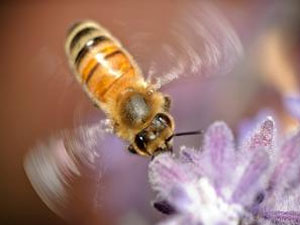《Nature》发表地球微生物学方面的新闻特稿“Geomicrobiology: Low life”
时间:2009-06-15 阅读: 我要评论:
《Nature》发表地球微生物学方面的新闻特稿“Geomicrobiology: Low life”
最新1期《Nature》(2009年6月11日出版)发表了地球微生物学方面的新闻特稿“Geomicrobiology: Low life”,站长限于时间有限不能将其翻译,有兴趣的网友可以欣赏其原文(如下)。
Nature 459, 770-773 (2009) | doi:10.1038/459770a
News Feature
Geomicrobiology: Low life
The boundaries of biology reach farther below Earth's surface than scientists had thought possible. Amanda Leigh Mascarelli delves into how microbes survive deep underground.
In February, a team of American and German oceanographers set out on a ship for a little-known destination in the middle of the Atlantic Ocean called North Pond. This patch of sea floor lies on the western flank of the Mid-Atlantic Ridge ?the longest mountain range in the world ?where the topography of the ocean bottom drops to form a 10-kilometre-long basin rimmed by underwater peaks.
For two weeks, Katrina Edwards, a geomicrobiologist from the University of Southern California in Los Angeles, and her team explored North Pond, collecting samples of the muddy sediments that fill the basin. From their ship, they dropped hollow coring tubes down through 4.5 kilometres of water and into the bottom muck. On lucky days, the equipment went straight through the sediment and struck the underlying rock, which bent the coring barrel into the shape of a banana. Although the collisions sacrificed a few pieces of pipe, they also yielded samples of the delicate interface between the rock and the sediment, one of the targets high on the researchers' wish list.
Edwards had come 7,000 kilometres to look for 'intraterrestrials' ?the microbes inside the sediments and the rocks beneath, where not long ago it was thought that life could not exist. She is among a group of scientists who are learning just how resilient and pervasive life is in the deep earth, both under the sea floor and inside the continental crust. Nicknamed the 'iron maiden' by her colleagues, Edwards is particularly interested in those life forms that feast on iron and that colonize some of Earth's most inhospitable terrain: the igneous crust that reaches to some 500 metres below the ocean bottom. "What I study is essentially the tooth decay of the solid Earth, the microbes that inhabit the nooks and crannies of Earth's molars that are exposed at the bottom of the ocean," says Edwards.
Such areas were largely inaccessible until the 1990s, when new techniques made it possible for scientists to make direct observations of this deep biosphere. In particular, oceanographers have developed sub-sea-floor laboratories known as circulation obviation retrofit kits (CORKs), which seal scientific instruments inside deeply drilled boreholes and make real-time measurements of life in the deepest, darkest realms of the marine subsurface. To date, researchers have mounted only one scientific drilling mission, in 2002, that was wholly dedicated to this biosphere, but they are poised to launch four more by 2013 through the international Integrated Ocean Drilling Program. "We're right at the cusp of this major breakthrough," says Edwards, who plans to return to North Pond in a year or two.
The North Pond study and others around the world are changing the way scientists think about the deep biosphere. Ten years ago, such low-life microbes were largely regarded as curiosities that represented one of the last frontiers on Earth. Now, scientists have come to appreciate these organisms as integral players in global cycles, helping to replenish key minerals in the ocean and even mediating the climate. "As the science matures, there is an ongoing sense of wonder about what's down there, but we're also coming to understand how they are involved in the biogeochemical cycling and the health of our planet," says Rick Colwell, a geomicrobiologist from Oregon State University in Corvallis (see 'Mining value from deep life').
New findings are also leading to insights about the origins of life on Earth and how life might exist on other planets. Although the microbes turn up nearly everywhere that scientists search for them, they often seem to subsist at the very brink of survival, metabolizing so slowly that it has prompted fresh ideas about the limits of life.
Deep-sea sandwich
This sandwich spent months at the bottom of the ocean.WOODS HOLE OCEANOGRAPHIC INSTITUTION ARCHIVES
In 1955, Claude ZoBell, considered to be the father of marine microbiology, probed beneath the sea floor and found microbes there, decreasing in numbers down to a depth of about 8 metres1. At that time, researchers thought that life would peter out at some point not far below the seabed. Then in the late 1960s, an inadvertent experiment supported the notion of a depauperate deep sea, when the research submersible Alvin sank more than 1,500 metres after a cable snapped. The crew of three escaped safely through the hatch, but their lunches were left behind. When the vessel was recovered 10 months later, the crew was surprised to find their stranded, soaked bologna sausage sandwiches and apples in nearly pristine condition, showing no sign of microbial decay. "This was the popular vision of the deep sea, being too extreme even for significant bacterial life," says John Parkes, a geomicrobiologist at Cardiff University, UK.
The notion of the deep sea as an uninhabitable desert persisted for decades, colouring thinking about the sea floor and what lay beneath it. Then, in the 1980s and 1990s, some of the first missions of the Ocean Drilling Program made it possible for researchers to dig deeper than ever before. When Parkes and his colleagues tried in 1990 to publish results in Nature showing that bacteria could colonize much greater subsurface depths than previously thought, they were met with "very sceptical reviews" and the paper was rejected, he says. But in 1994, they succeeded in publishing their results and reported viable microbes living in ocean sediments at depths greater than 500 metres below the seabed2.
Active bugs
That and subsequent studies showed that microbes could be cultured from samples obtained far below the sea floor. But the techniques at the time could not definitively show that the organisms were alive and actively metabolizing at such remarkable depths, leaving open the possibility that the deep bacteria were dormant, barely living. But in 2005, researchers led by Axel Schippers of the Federal Institute for Geosciences and Natural Resources in Hannover, Germany, showed the presence of intact membranes and ribosomes3 ?the first conclusive evidence that bacteria are thriving in 16-million-year-old sediments more than 400 metres deep. Last year, metabolically active microbes were reported in 111-million-year-old sediments buried as deep as 1.6 kilometres below the seabed4.
So little is known about microbes that dwell in the deep that scientists have a hard time estimating what fraction of life they represent. A decade ago, estimates derived from work by William Whitman of the University of Georgia in Athens and his colleagues5 suggested that one-third of all life on Earth lives in the sub-sea-floor sediments. But most of the samples of microbes from deep sediments have been collected close to shore, meaning that much of the ocean has been underrepresented. Steven D'Hondt, an oceanographer at the University of Rhode Island in Narragansett, recently sampled sub-sea-floor sediments in the North and South Pacific oceans. Those findings suggest that global cell abundances may be an order of magnitude lower than previous estimates, D'Hondt and his colleagues reported last December at a meeting of the American Geophysical Union in San Francisco. Yet Whitman's numbers did not include microbes living in the ocean crust, which would add to the estimated cell counts, says Edwards.
These hidden microbes are turning up in other unexpected places. In the late 1990s, researchers plumbing the depths of the continental crust in a South African gold mine discovered microbes living at about 3 kilometres below the surface. Plans are now under way to begin drilling in the deepest mine in North America: Homestake in South Dakota, which is to house the US Deep Underground Science and Engineering Laboratory. The mine reaches down nearly 2.5 kilometres, and researchers hope to drill from that depth into rock with temperatures exceeding 120 癈. "The deepest extent of the biosphere is currently unknown," says Tom Kieft, an environmental microbiologist from the New Mexico Institute of Mining and Technology in Socorro. "If we drill deeply enough, we'll reach beyond the upper temperature limit for life, which is thought to be around 121 癈."
Organisms that live in the deep biosphere bear little resemblance to surface bacteria such as Escherichia coli, which can be easily cultured in the lab and divide every few minutes. In the sub-sea floor, bacteria and another group of microbes called archaea are slow by comparison, says Bo Barker J鴕gensen, a biogeochemist at Aarhus University in Denmark. For organisms buried beneath the surface of the continents, the first estimates suggested that they reproduce on a timescale measured in centuries6. And Tullis Onstott, a geomicrobiologist at Princeton University in New Jersey who pioneered much of the exploration for deep terrestrial life in South African gold mines in the late 1990s, estimates that subsurface microbes there may reproduce once every 1,000 years.
Energy crisis
Even with such low metabolic rates, it remains unclear how such organisms sustain themselves. "When we do the calculations, there's not enough energy down there at all for these organisms," says Parkes. "They should all be dead."
The sparse food present in the deep-sea sediments comes from the sunlit layers. There, photosynthesizing plants and algae digest organic matter that eventually rains down in the form of dead algal cells, faecal matter and marine detritus. It settles on the sea floor and accumulates in the sediments over millions of years. Scientists estimate that the majority of sub-seabed microbial communities graze on this deeply buried organic carbon, contributing to the 'deep carbon cycle'. Only those microbes beneath the sea floor can metabolize these gritty organic leftovers.
Like earthworms that plough the soil and recycle minerals and nutrients, these sub-sea-floor microbes produce carbon dioxide and methane and liberate key elements including nitrogen, sulphur and phosphorus from the sediments. And as fluids circulate through the crust, they carry microbes that can erode the rock, releasing iron and other elements. The circulating fluids take these nutrients back up into the ocean, where they can feed the growth of new biomass. "The carbon cycle of the oceans and of planet Earth reaches deeply into the subsurface biosphere and cannot be understood without the subsurface contribution," says Andreas Teske, a microbiologist at the University of North Carolina in Chapel Hill.
The discoveries of the past decade back up a portion of the 'deep hot biosphere' hypothesis, proposed in 1992 by the late Thomas Gold, an astronomer at Cornell University in New York. In a famous paper7, Gold argued that the subsurface supports a mass and volume of life rivalling that present on the surface. But Gold went further to speculate that the deep biosphere subsists on hydrocarbons rising from Earth's mantle, a vast energy source that continually refills oil deposits. That suggestion is no more accepted now than it was at the time.
Climate connection
Even as they help recycle nutrients, the microbes below the sea floor may also have an effect on the planet's climate. Archaea called methanogens produce methane as a by-product of their metabolism. Colwell is working to quantify the rates of that methane production and says that they sometimes fall below the detection limit8. Yet the methane builds up over geological timescales and contributes to the formation of 'hydrates', icy cages of water molecules surrounding methane that become wedged in marine sediments. Most methane hydrates are thought to be generated by microbial processes9.
Such deposits have apparently become destabilized at several times in Earth's past, releasing enough methane ?a greenhouse gas much more potent than CO2 ?to warm the planet substantially10. As the globe heats up because of human pollution, scientists are becoming increasingly concerned about the potential breakdown of methane hydrates that are trapped inside thawing Arctic tundra and shallow marine sediments.
Whereas the vast majority of microbes in the deep biosphere rely on leftover organic matter for food, others seem to be getting sustenance from an inorganic source. D'Hondt is investigating whether sub-sea-floor microbes may be obtaining energy from hydrogen that is produced when the radioactive decay of naturally occurring elements such as uranium, thorium and potassium splits water molecules into hydrogen and oxygen. The same process would have occurred on the early Earth more than 4 billion years ago, "and it should be occurring on Mars today", says D'Hondt. "We've found some evidence that as much energy is entering these [sub-sea-floor] ecosystems from radioactive splitting of water as from burial of organic matter." As yet, though, the identity of any microbes making a living in this way is unclear, he says.
In the terrestrial biosphere, microbes found in a South African gold mine nearly 3 kilometres underground have a similar form of metabolism. They subsist on geologically produced sulphate and hydrogen, free from any dependence on energy derived from the Sun11.
Early Earth
Geomicrobiologists working in South Africa have also reported the first ecosystem that comprises a single bacterial species, Candidatus Desulforudis audaxviator, which lives out its lifetime in pitch darkness at 60 C, some 2.8 kilometres beneath the surface of Earth12. This microbe seems to obtain its energy by reducing sulphate that is formed indirectly by the radioactive decay of uranium, and it can extract carbon and nitrogen from the surrounding rocks.
Dylan Chivian, a computational biologist at Lawrence Berkeley National Laboratory in California and the lead author of the study, says that this single-species ecosystem "points to a mode of life that potentially is what early Earth might have been like", before the atmosphere held much oxygen.
The deep microbes discovered in mines are sometimes found in pockets of water that have been secluded for millions of years, practically making the organisms there living fossils. Fractures in the rocks periodically open and close due to tectonic shifts, locking the water and the microbes into what Barbara Sherwood Lollar, a geochemist at the University of Toronto in Ontario, calls a "series of time capsules". "In these hydrogeologically isolated systems of very great age, it raises all kinds of fascinating questions about how long the microbes have been there, how they've evolved and what that means for our understanding of the origins of life on the planet," she says.
Because microbes that colonize the deep biosphere have mastered the art of living on the margin, the astrobiology community has also taken a keen interest in them. "Energy limitation is almost certainly a fact of life in extraterrestrial habitats," says Teske. The anaerobic metabolic reactions that deep-dwelling microbes use are the very chemical reactions that are most likely to support life on other planets, he adds.
"It's so fascinating that all this microbiology and these processes that were once considered to be in the realm of geology are really supporting a major part of life on Earth," says Jgensen. "It's like discovering a new continent."
That sense of potential is what motivated Edwards and her colleagues during their recent trip to North Pond. In the waning days of the expedition, the team kept a frenzied pace collecting mud cores and storing them in refrigerators for the journey home. This cruise was a reconnaissance mission of sorts, which will set the stage for future expeditions. In 2010 or 2011, Edwards plans to return aboard the drill ship JOIDES Resolution that can penetrate rock and bore down some 500 metres into the crust. Once there, they plan to install a CORK observatory that will peer inside the intraterrestrial underworld and monitor that environment for a decade. These missions and others, Edwards hopes, will finally shed light on the deep dark biosphere and the lower limits of life itself.
Amanda Leigh Mascarelli is a freelance science writer based in Denver, Colorado.
- References
环境科学之家(http://www.eschina.org.cn/)
| 《Nature》:中瑞合作研究确定二次气溶胶是中国雾霾的主要污染物 |
| 《Nature》:气候变化影响南极海狗生存 |
| 《PNAS》:人造叶片电池实现光合作用 |
| 《Science》:首份21世纪全球森林变化图 |
| 《Nature》:北京大学朴世龙等人解析昼夜变暖对北半球植被生产力的影响 |
| 2013年11月07日《Nature》杂志精选导读 |
特别声明:本文转载仅仅是出于传播信息的需要,版权归原作者所有,并不意味着代表本网站观点或证实其内容的真实性; 如其他媒体、网站或个人从本网站转载使用,须保留本网站注明的“来源”,并自负版权等法律责任; 作者如果不希望被转载或者联系转载稿费等事宜,请与我们接洽:service#environmentor.cn(请将#改为@)。
来源: 作者: (环境人 Environmentor.Cn)





